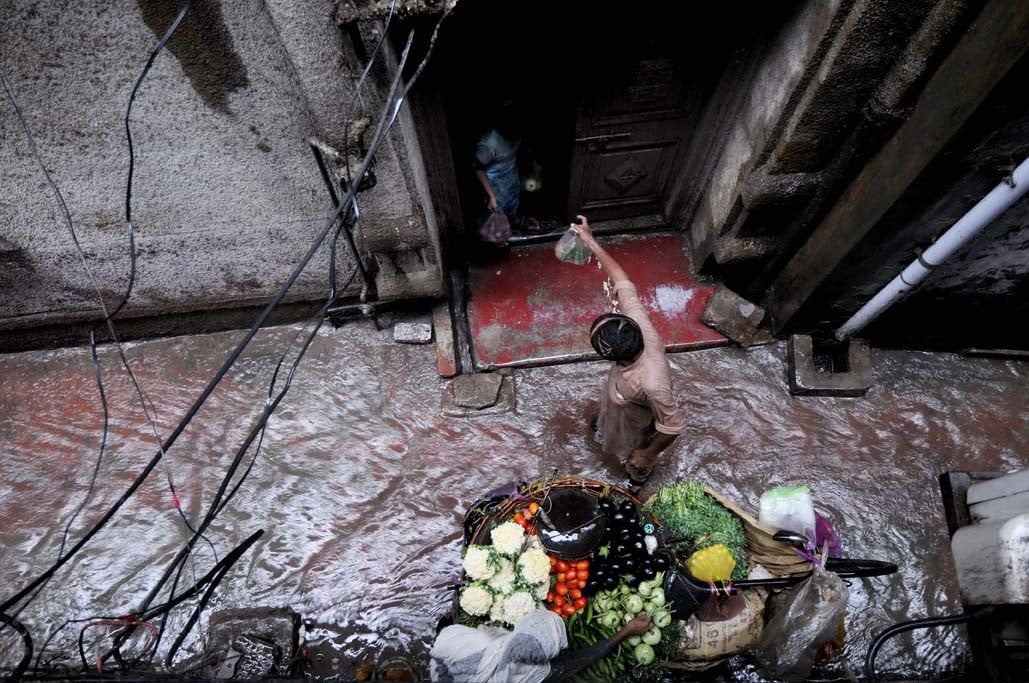
Come monsoon, and the district government’s ineffective policies become apparent. For instance, the lack of modern technology to pump out rainwater that stays on the roads and in the streets for days, becoming a nightmare for dwellers of low-lying areas

All is not well for the Lahorites, during the monsoon season, particularly for those living in low-lying areas and rundown buildings. Every year, around this time, the district administration tries to protect such localities from maximum loss which normally ensues in the form of electrocution, roofs collapsing and drowning of kids. The roads inundated with rain water only add to the commuters’ woes.
Sadly, the efforts made by the district government prove ineffective, for lack of availability of modern equipment to pump out rainwater which remains there for days, becoming breeding grounds for insects and mosquitoes.
Where the main roads of the city become clear of rain water sometime after a downpour, the roads and streets in low-lying areas remain submerged in water until and unless WASA and other civic agencies drain it. The residents of these areas blame decades-old sewerage system for water accumulation in their areas. They are of the view that the government focuses on the construction of streets and roads but ignores the sewerage system.
"There is an urgent need to replace the existing sewerage system and also to clean the drains and nullahs. Why the government doesn’t do anything about it prior to the start of the rainy season beats me," says Maqbool from Lakshmi Chowk.
The recent rains in the city saw the Metro Bus collect water along its route and at various stations. This reflects ill on the planning of the authorities concerned.
Talking to TNS, City District Government Lahore (CDGL) spokesman Tariq Zaman Khan says in some areas the Metro Bus stations were inundated with rainwater because the sewerage was chocked.
At the stations, the rain water entered the basement. "We are constructing walls around the stairs that lead to the lower ground level," he adds.
The two newly constructed drains on the Mall Rd ensure that rainwater does not stay there for long, Khan says.
Lahore is not a plain land where water is pumped out with the help of machines. As a result, the roads and streets have to be cleared of water. At least 25 areas of the city have been identified as low-lying. According to the CDGL spokesman, Wasa and other civic agencies are seeking reports on a daily basis, of water situation in these areas.
He further says that the water disposal stations, during heavy rains, run on without any break. "In the event of a power breakdown, the [Metro] stations don’t stop working, as generators are installed there."
Rana Ghulam Mujtaba, XEN of Wasa in Ravi Town, says Misri Shah, Ek Moria Pul and Do Moria Pul are low-lying areas and Wasa has installed water pumping stations in these localities to remove rainwater.
"Our technicians work round-the-clock and monitor all equipment installed to remove rainwater from low-lying localities of the city," he adds. "Gone are the days when rainwater kept standing in streets and roads for long. Proper drainage system and disposal stations have ensured an early removal of water from the low-lying areas.
"Even in developed countries, during heavy rains, water takes sometime to drain out but this does not mean the civic agencies failed," Mujtaba says.
The olden areas of Lahore are densely populated and the sewerage system here is not sufficient to carry sewer and rainwater to nullahs. Most sewerage lines remain chocked which causes havoc for the residents in the event of heavy showers. The localities are usually submerged. Though in many localities, nullahs have been constructed, congestion and overpopulation prove to be the main hurdles in a smooth working of these nullahs.
Sewerage pipes in these localities are not enough to carry rainwater to the main drains. Wasa uses pumping stations to put rainwater into main nullahs of the city, the XEN says.
Izhar Ali, In-charge of the Lakshmi Chowk Wasa Emergency Camp, says the Chowk "was like a bowl and water from Gawalmundi, Railway Station, Nisbat Road and Mall Road would collect here. In order to remove it, Wasa had to set up five turbines."
Ali also says that in order to deal with any emergency, Wasa field staff works overtime. Emergency camps have been set up in rain-lashed areas and the staff responds to every call at the earliest.
Deputy District Officer (DDO) Headquarters Ehsan Hashmi says the City District Government and Wasa have identified the following localities as vulnerable: Lakshmi Chowk, Gawalmandi Chowk, Garhi Shahu Chowk, Davis Road, Railway Station, Shadbagh, Misri Shah, GPO Chowk, Chauburji, Fateh Garh, Mughalpura, Khokhar Road, Amir Road, Sham Nagar, Ravi Road, Badami Bagh, Shad Bagh and Chahmiran.
On holidays, people like to go to parks and other open, recreational places. But rain turns their excursions into a nightmare, because in almost all parks of the city, there is no proper system to drain out the rainwater. The picnickers can be spotted wading through knee-deep rainwater in the parks. The threat of dengue also rises in this situation.